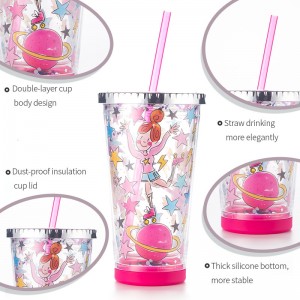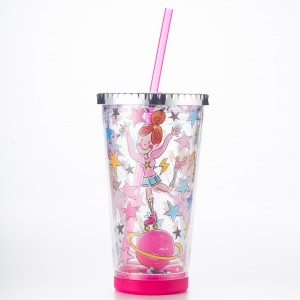1. Biodegradable plastics
Biodegradable plastics refer to plastics whose various performance indicators can meet functional requirements, the performance indicators do not change during the shelf life, and can be degraded into components that do not pollute the environment under the influence of the environment after use. Classification of degradable plastics. According to the degradation form, degradable plastics can be divided into four categories: biodegradable plastics, photodegradable plastics, photo- and biodegradable plastics, and water-degradable plastics. According to the classification of raw materials, degradable plastics can be divided into biodegradable plastics and petroleum-based degradable plastics. Advantages of degradable plastics. Biodegradable plastics have their advantages in terms of performance indicators, practicality, degradability, and safety issues.In terms of performance indicators, degradable plastics can achieve or exceed the performance indicators of traditional plastics in some special aspects; in terms of practicality, degradable plastics have the same application performance indicators and hygienic performance as traditional plastics of the same type; in terms of degradability After use, degradable plastics can be degraded quickly under the influence of the natural environment and turn into fragments or non-toxic gases that are easily utilized by the natural environment, reducing the impact on the natural environment; in terms of safety issues, degradable plastics The components or residues formed during the degradation process will not pollute the natural environment and will not affect the survival of humans and other organisms. The main obstacle to replacing traditional plastics at this stage is also the disadvantage of degradable plastics, which is that their product costs are higher than the same type of traditional plastics or recycled plastics.
2. Recycled plastics
Recycled plastics refer to plastic raw materials obtained after processing waste plastics through physical or chemical methods such as pretreatment, melt granulation, modification, etc. The main advantage of recycled plastics is that the price is lower than that of new materials and degradable plastics, and it can only process certain aspects of plastic properties according to different performance index needs, and produce corresponding products. As long as the recycling frequency is not too high, recycled plastics can ensure the same performance indicators as traditional plastics, or recycled materials can be mixed with new materials to maintain stable performance indicators. However, after multiple cycles, the performance indicators of recycled plastics decline greatly or become unusable.
3. Biodegradable plastic pK recycled plastic
According to comparison, degradable plastics have more stable performance and lower reuse costs. They have the advantage of replacing packaging, agricultural mulch films and other applications that have short utilization times and cannot be separated and reused; while recycled plastics have The lower price and processing cost are more advantageous in application fields such as daily necessities, building materials, and electrical equipment that have a long service life and are easier to classify and reuse. The two complement each other. White pollution mainly comes from the packaging industry, and degradable plastics have greater room to play. With the advancement of policies and cost reductions, the degradable plastics industry has broad prospects in the future. In the packaging industry, the replacement of biodegradable plastics is already established. Plastics have a wide range of applications, and different industries have different standards for plastics. The standard requirements for plastics in industries such as automobiles and household appliances are that they are durable and easy to separate, and single plastics are used in large quantities, so the status of traditional plastics is relatively strong. In packaging industries such as plastic packaging bags, fast food boxes, agricultural mulch films, and express delivery, because the use of plastic monomers is low and easy to contaminate, they cannot be separated efficiently. This makes degradable plastics more likely to become a substitute for traditional plastics in these industries.
Biodegradable plastics are a more effective solution to white pollution than plastic recycling. 59% of white pollution comes from packaging and agricultural mulch plastic products. However, plastics for this type of use are disposable and difficult to reuse, making them unsuitable for plastic recycling. Only degradable plastics can fundamentally solve the problem of white pollution. Except for starch-based plastics, the average selling price of other degradable plastics is 1.5 to 4 times that of traditional plastics. This is mainly because the production process of degradable plastics is more complex and requires the use of expensive natural biomolecules for polymerization, which invisibly increases production costs. In industries that are sensitive to cost and performance, traditional plastics still maintain their advantages in terms of size, price and comprehensive performance, and their position remains firm in the short term. Biodegradable plastics mainly replace the traditional plastics industry that is driven by policies and has relatively low price sensitivity.
Post time: Oct-20-2023

